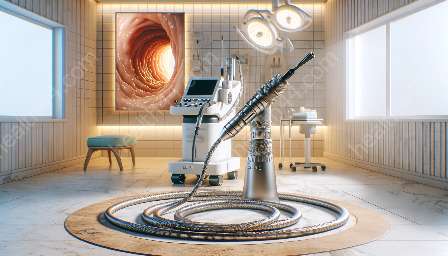Medical technology has seen significant advancements in recent years, and one such breakthrough is the development of capsule endoscopy. This innovative procedure involves a tiny wireless capsule that allows for non-invasive imaging of the digestive tract, revolutionizing the field of gastroenterology. In this comprehensive guide, we will delve into the fascinating world of capsule endoscopy, its compatibility with endoscopes and other medical devices and equipment, and its profound impact on medical diagnostics and patient care.
Understanding Capsule Endoscopy
Capsule endoscopy, also known as wireless capsule endoscopy or small bowel endoscopy, is a minimally invasive procedure that involves swallowing a small, pill-sized capsule equipped with a tiny camera and light source. The capsule traverses through the digestive system, capturing high-definition images of the gastrointestinal tract as it moves along. These images are transmitted wirelessly to a recording device worn by the patient, allowing for real-time visualization and examination of the small intestine, which was previously challenging to access through traditional endoscopic procedures.
This cutting-edge technology has transformed the way medical professionals diagnose and manage a myriad of gastrointestinal conditions, including Crohn's disease, celiac disease, obscure gastrointestinal bleeding, and small bowel tumors. By providing detailed and comprehensive images of the small intestine, capsule endoscopy offers invaluable insights into the mucosal lining, vascular patterns, and pathological changes, aiding in the early detection and treatment of gastrointestinal disorders.
Compatibility with Endoscopes
While capsule endoscopy represents a significant leap forward in gastrointestinal imaging, its compatibility with traditional endoscopes further enhances its diagnostic capabilities. Endoscopes, which are flexible, lighted tubes equipped with a camera and lens, are commonly used for direct visualization of the upper and lower gastrointestinal tract. The integration of capsule endoscopy with conventional endoscopes allows for a comprehensive assessment of the entire digestive system, from the esophagus and stomach to the small intestine and colon.
Furthermore, the seamless compatibility between capsule endoscopy and endoscopes facilitates a holistic approach to gastrointestinal evaluations, enabling healthcare providers to obtain a comprehensive overview of the patient's gastrointestinal health. By integrating the findings from both capsule endoscopy and traditional endoscopic procedures, clinicians can make more accurate diagnoses, develop targeted treatment plans, and monitor disease progression with greater precision and insight.
Impact on Medical Devices and Equipment
The advent of capsule endoscopy has not only revolutionized gastrointestinal imaging but has also spurred advancements in medical devices and equipment. The development of miniature, high-resolution cameras, wireless transmission technology, and compact recording devices has paved the way for the creation of sophisticated capsule endoscopy systems that offer unparalleled diagnostic capabilities while prioritizing patient comfort and convenience.
Medical device manufacturers and engineers continue to refine and innovate the design and functionality of capsule endoscopy systems, aiming to enhance image quality, prolong battery life, and improve ease of use. These advancements not only benefit healthcare professionals by providing clearer and more detailed imaging but also contribute to a more patient-centric approach to medical diagnostics, minimizing patient discomfort and anxiety associated with traditional endoscopic procedures.
Transforming Medical Diagnostics and Patient Care
The introduction of capsule endoscopy has undeniably transformed the landscape of medical diagnostics and patient care. By offering a non-invasive and comprehensive method of visualizing the gastrointestinal tract, capsule endoscopy has empowered healthcare providers to detect and diagnose gastrointestinal conditions with greater accuracy and efficiency, ultimately leading to improved patient outcomes and quality of care.
Patients also benefit significantly from the implementation of capsule endoscopy, as the procedure eliminates the need for more invasive and uncomfortable traditional endoscopic examinations. The ability to seamlessly swallow a small capsule and undergo thorough gastrointestinal imaging without the need for sedation or invasive maneuvers enhances patient comfort, compliance, and overall experience, making it particularly advantageous for individuals with a history of endoscopy-related anxiety or discomfort.
In conclusion, capsule endoscopy stands as a testament to the transformative power of medical technology, offering a minimally invasive yet profoundly impactful approach to gastrointestinal imaging and diagnostics. As the compatibility between capsule endoscopy and endoscopes continues to evolve, and medical devices and equipment further advance, the potential for improving patient care and expanding diagnostic capabilities in gastroenterology remains immense.


